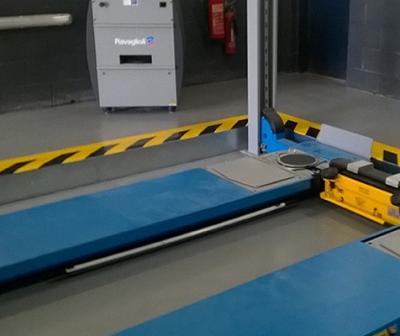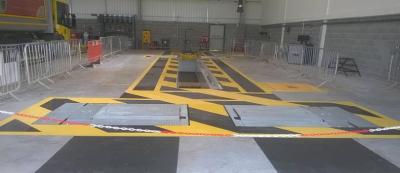Understanding MOT Bay Standards and Regulations

For garages offering MOT testing, a compliant MOT bay is the foundation of a successful operation. Not only does it ensure the smooth running of tests, but it also demonstrates professionalism and upholds the high standards expected by the Driver and Vehicle Standards Agency (DVSA).
Here at JHM Butt, we understand the importance of staying informed about MOT bay regulations. This blog post dives into the key aspects you need to consider:
Premises and Facilities:
- Location and Space: Your garage needs to be easily accessible for customers. Ensure you have sufficient space to accommodate dedicated MOT bays, waiting areas, and administrative offices.
- Lighting and Ventilation: Proper lighting is crucial for thorough inspections. Additionally, adequate ventilation helps remove exhaust fumes and maintain a safe working environment.
MOT Bay Specifications:
- Class System: The DVSA categorises MOT bays based on the vehicle types they can test. The most common are:
- Class 4: Suitable for cars and light vans.
- Class 7: Designed for larger goods vehicles (LGVs).
- Dimensions: Specific bay dimensions are mandated for each class. These include minimum width, height, and length for entry/exit points, headroom, and brake testing areas. You can find detailed information on the DVSA website or consult with MOT equipment suppliers like ourselves.
- Inspection Pit or Lift: Every MOT bay requires either a vehicle lift with a suitable lifting capacity or a designated inspection pit that meets size and depth specifications.
- Approved Equipment: Equipping your MOT bay with the necessary DVSA-approved tools is essential. This includes:
- Brake testers (plate or roller)
- Exhaust gas analysers
- Headlamp aim testers
- Tyre tread depth gauges
- Wheel play detectors
- Additional equipment specific to the MOT class (e.g., diesel smoke meter for Class 4)
Maintaining Compliance:
- Regular Inspections: It's crucial to have your MOT equipment regularly inspected and calibrated to ensure accuracy and maintain DVSA approval.
- Record Keeping: Proper record-keeping of garage equipment calibrations, inspections, and maintenance is mandatory.
- Updates and Changes: Stay informed about new regulations and updates from the DVSA. This might involve incorporating "Connected MOT Equipment" for new garages or those under new ownership.
JHM Butt: Your Partner in MOT Bay Compliance
Navigating MOT bay regulations can seem daunting. At JHM Butt, we're here to help. We offer a comprehensive range of MOT testing equipment, all DVSA-approved to ensure your garage meets the necessary standards. Our team can also provide expert advice on MOT bay design, workshop equipment selection, and compliance procedures.
Remember, a compliant MOT bay is an investment in your business. It fosters trust with customers, simplifies the testing process, and keeps your garage running smoothly.
We encourage you to explore the DVSA website for more detailed information and reach out to our team if you have any questions regarding garage equipment.


















